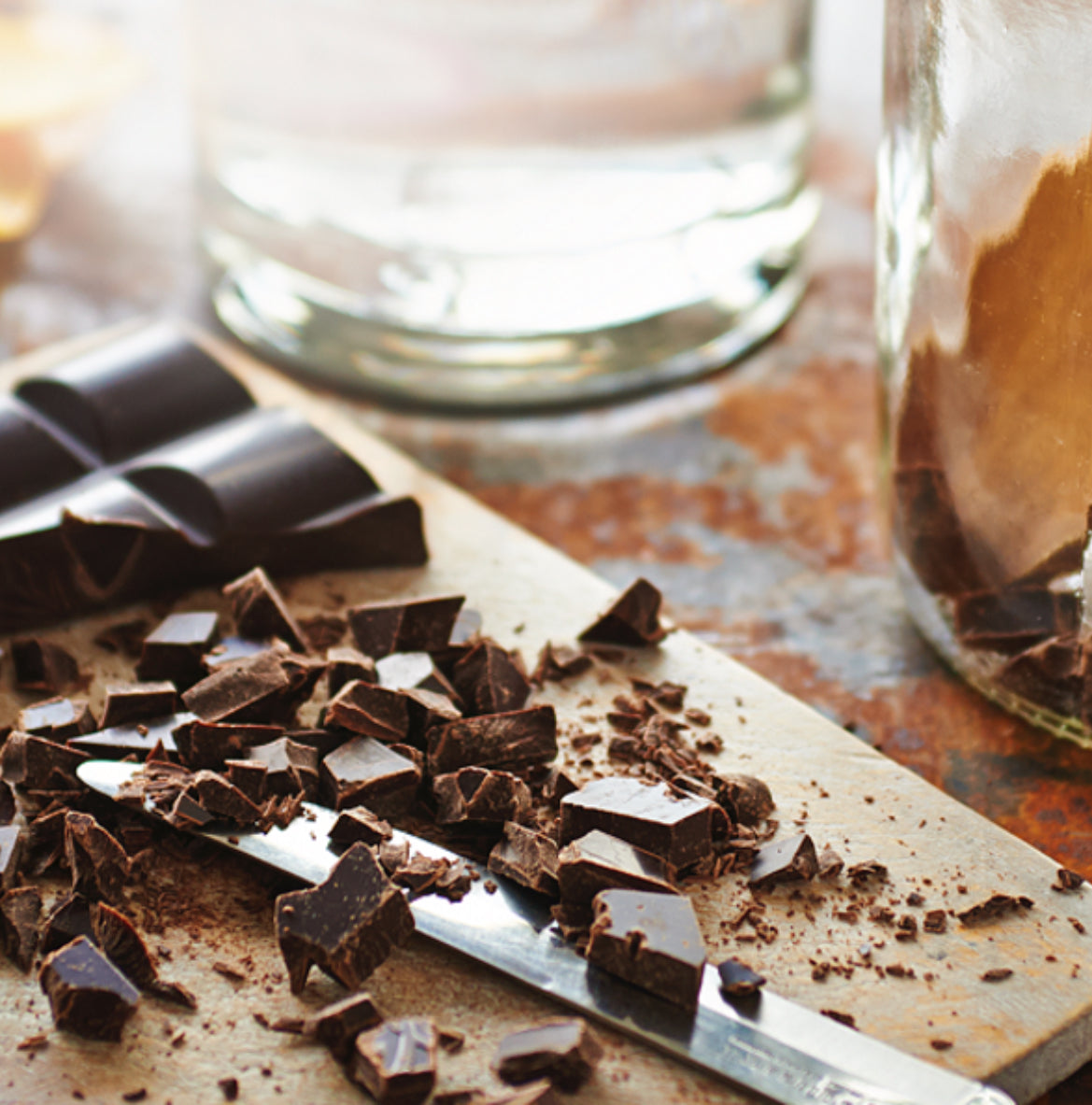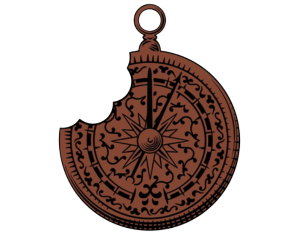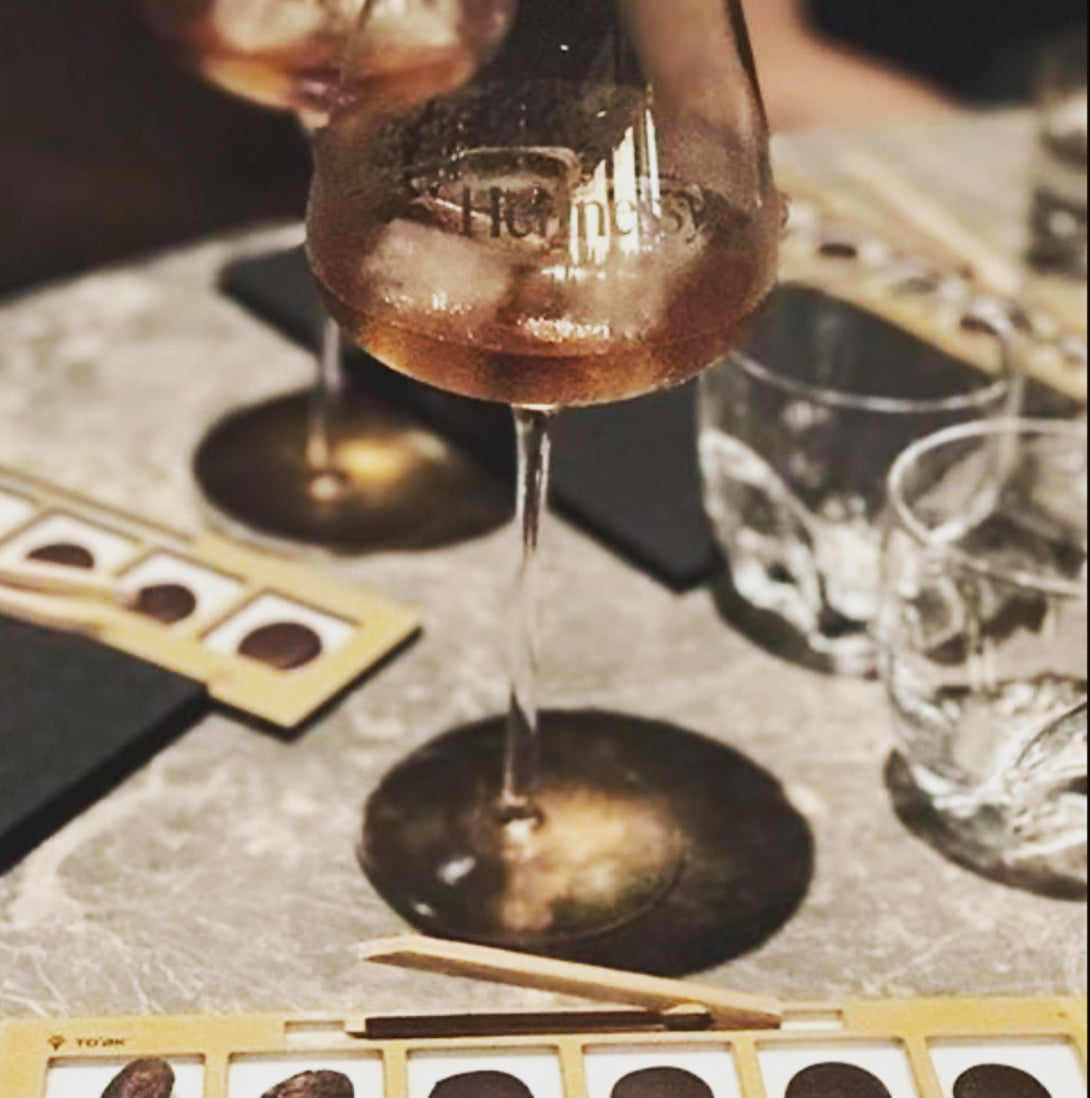Chocolate & Vodka

“Once we hit forty, women only have about four taste buds left: one for vodka, one for wine, one for cheese, and one for chocolate.” - Gina Barreca
Poor Gina! The author of the above quote appears to be suffering from a major loss of taste buds! The average adult tongue should have between 2,000 and 8,000 of these tiny sensory organs. The good news is that half of Gina’s four remaining taste buds are dedicated to the appreciation of vodka and chocolate, the subject of today’s Chocolog post. I hope that all fans of chocolate and vodka, no matter how many taste buds they currently possess, will try tickling them with my suggested pairings.
But first, let’s begin with Vodka 101…
Vodka, the world’s most commonly used spirit, is crafted all over the globe, with major distilleries in Russia, the U.S. and Australia. This neutral spirit is often made using potatoes or grains such as rye, wheat, corn or barley. Technically, any agricultural product, including sugar cane, beets, grapes, or vegetables, may be used as a base to ferment, distill, and transform into vodka. In most countries, vodka must have a minimum alcohol content of somewhere between 37%-40%.
Vodka is known as a “rectified spirit,” which means that it is distilled at least three times. Some makers distill the alcohol five or more times, and a greater number of distillations typically indicates higher purity. After vodka is distilled, it is filtered through charcoal to remove any remaining impurities. Then it is cut with water prior to being bottled. Unlike wine, beer, and other spirits, there is no need to age vodka, though many makers choose to do so.
Vodka, (which comes from the Russian word voda, meaning “water,”) got its name from chemist Dmitri Mendeleev, author of the periodic table of elements. Monks may have been among the first to develop this distillate in the Middle Ages. Many believed that the spirit functioned as both medicine and a protection against the cold.
Vodka became increasingly popular in 1917 during the Russian Revolution. As Russians escaped and migrated towards Europe, they brought their beloved “voda” with them. In 1945, when citizens of the Soviet Union learned that Nazi Germany had signed the act of unconditional surrender, they took to the streets in their pajamas and celebrated by drinking copious amounts of vodka. Fewer than 24 hours after this big party began, the population had imbibed all the vodka reserves in the country! Almost a century later, people still turn to vodka to liven up a celebration.
Nowadays, many vodka drinkers choose flavored as well as aged varieties. While this may seem like a trendy innovation, flavoring and/or aging vodka is hardly new. Starka, an infused and aged vodka, can trace its roots back to Poland and Lithuania. In the 1400s it was customary for Lithuanian families to fill empty wine casks with vodka and the leaves of apples and limes when a daughter was born. The bottle would be sealed with beeswax and buried in loose, sandy soil. Years later, at the girl’s wedding feast, the cask would be retrieved and the delightful elixir would be shared among family and friends. Today’s starkas have rich notes of oak, subtle fruit, spice, cream and toasted vanilla. A variety of fine chocolate flavor profiles would pair nicely with them.
Perhaps you’ve noticed a wide array of playful vodka flavors popping up, such as citrus, dragon fruit, açaí, pepper, Sriracha, bacon, salted caramel, birthday cake and even cinnamon bun! Many of these contain artificial flavorings, but creative people have been making their own natural infusions for ages. In fact, I encourage you to try your hand at cacao nib-infused vodka!
You’ll need:
1 bottle (750 ml) of top shelf vodka such as a Beluga Gold, Grey Goose or Ciroc
½ cup (2 oz) high quality cacao nibs (I prefer Dandelion’s nibs)
Optional add-ins: vanilla pod, cinnamon stick, or peel of one orange with pith removed
Baking tray
Mesh strainer
Pitcher
Cheesecloth
Directions:
Your vodka will have a richer, nuttier flavor if you toast your cacao nibs prior to infusing. To roast the cacao nibs, preheat the oven to 350 degrees Fahrenheit. Spread the nibs in a single layer on a baking tray. Roast for about 8-12 minutes or until fragrant. Check the nibs often as they can burn quickly. When nicely toasted, remove nibs from the oven and allow them to cool completely.
Now you’re ready to infuse your vodka. Pour out approximately ⅓ cup of the vodka. Drink it, or store it in a jar if you’d like to add it back to the infusion once it’s complete. Add the cacao nibs to the bottle of vodka through a funnel. If you’re using any of the optional ingredients, add them to the bottle as well. Screw the top back on the bottle and turn it upside down several times. Allow the nibs to steep in the vodka for about three days, continuing to turn the bottle upside down a few times daily.
After 3 days (or whenever your taste buds feel the mixture is ready), strain the vodka into a pitcher through a mesh strainer lined with a triple layer of cheesecloth. Don’t discard the nibs! You can sprinkle them over ice cream. Pour the nib-infused vodka through the funnel back into the bottle and add the reserved vodka if you still have it. Enjoy it straight or as a component of your next cocktail.
If you prefer to savor your chocolate in bar form when pairing with vodka, try something silky, intense and dark such as the Rósavölgyi Csokoládé Chuao Dark Chocolate Bar (73%), Fruition’s Colombia Tumaco Dark Chocolate Bar (85%), or Fruition's Dominican Los Bejucos 77%. All three of these bars are smooth, bold, and deeply chocolatey, with a clean finish. They’d be especially nice with the cacao nib-infused vodka. If you choose a starka, KahKow’s full-bodied La Magdalena, with notes of fresh berries, honey and caramel, would make a lovely accompaniment, as would the Qantu Gran Blanco 70%.
For the ultimate chocolate and vodka experience, serve the vodka neat. Drinks on ice numb the palate. If you’ve made the cacao-nib infused vodka, sip that with a bar of craft chocolate!
How to Savor Chocolate with Vodka:
- Taste the chocolate by itself. Notice the aroma and flavor notes.
- Cleanse your palate with a plain cracker, piece of crusty bread, or a thin wedge of tart green apple.
- Now taste the vodka by itself, paying attention to its aroma, texture and flavor.
- Take another taste of the chocolate, biting into it and then allowing it to melt slightly in your mouth. This can take anywhere from 5-10 seconds.
- Take a sip of the vodka as the chocolate continues its melting process. Notice the commingled flavors and sensations in your mouth and body as you unite these two distinct tastes.
- Swallow the vodka while the melting process of the chocolate is still underway, and marvel at the unique flavor arc that blossoms and unfolds in your mouth. Enjoy the full effect as the chocolate completely melts.
When you savor chocolate alongside any food or beverage, familiar and unfamiliar flavors dance together on your palate. Pleasure often resides in the unexpected twists… that magical intersection where certainty and uncertainty meet. If you wish to pair chocolate and vodka with refinement, you need not have thousands of taste buds. A few spirited ones will do just fine!!
0 comments


